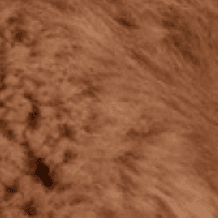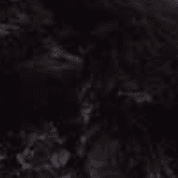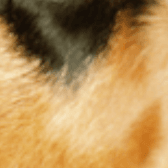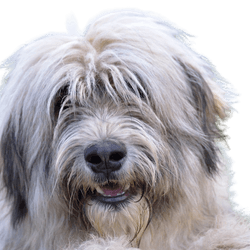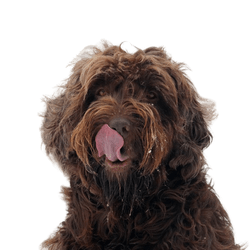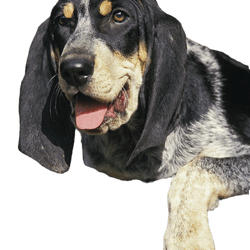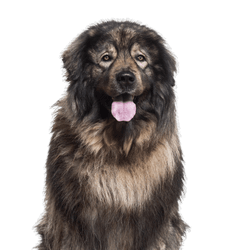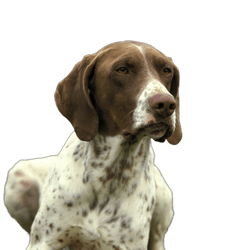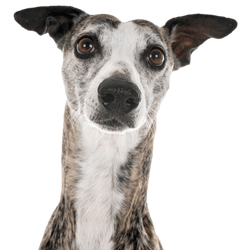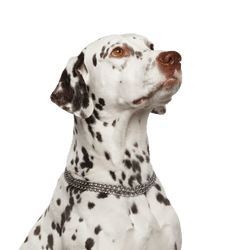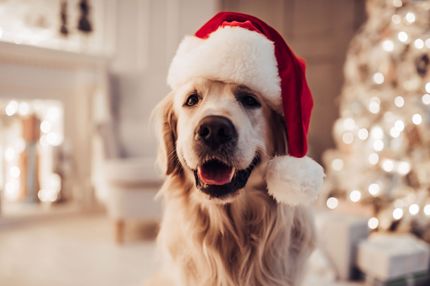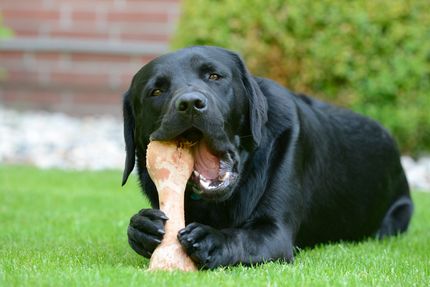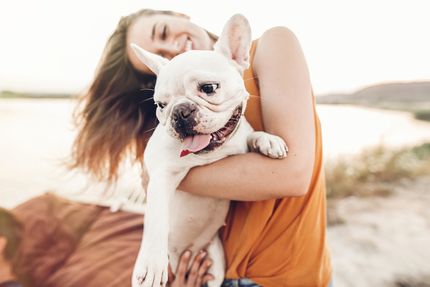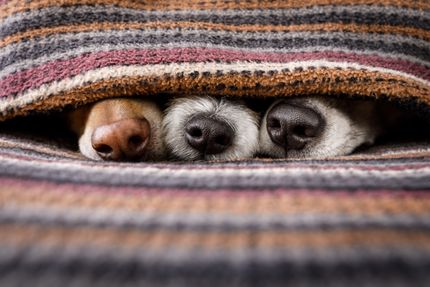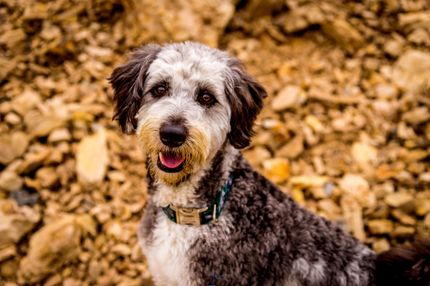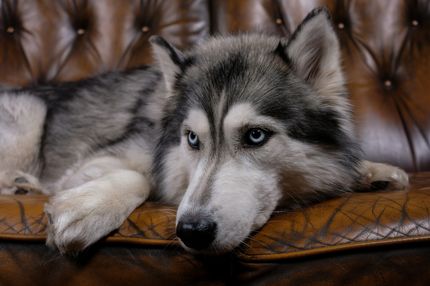Facts & Origin
Origin and history of the Rottweiler
The Rottweiler, whose origins date back to Roman times, is one of the oldest dog breeds. At that time, he was kept as a herding and driving dog and ultimately moved with the Roman legions across the Alps. In Rottweil, a Swabian town, they met local dogs. In addition to his previous duties, he was now used to defend his master and property. He then became known as the "Rottweiler Butcher Dog" when he was bred by the butchers of the time exclusively for their use.
Thus, in the course of time, an excellent herding and driving dog was created, which was also used as a draft dog.
Use and attitude
The Rottweiler is described by the FCI as a companion, service and working dog and, according to the breed standard, must pass a working test. It was also officially recognized as a police dog in 1910. Although the breed is basically not a beginner's dog, it can be a suitable family dog with the right experience.
The Rottweiler - a list dog?
The Rottweiler is in some states (eg Hesse, Bavaria, Brandenburg, Hamburg and North Rhine-Westphalia) as a list dog, so is there classified as dangerous due to breed. For list dogs a permission reservation as well as a nature test is intended. In Vienna and Lower Austria, the Rottweiler is also considered a listed dog: it must therefore wear a muzzle in public places.
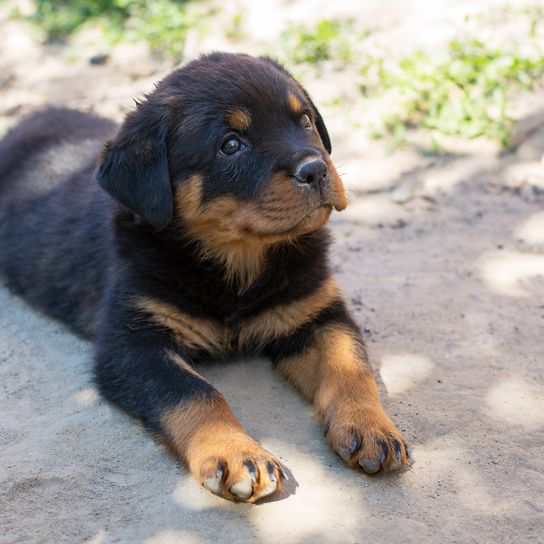
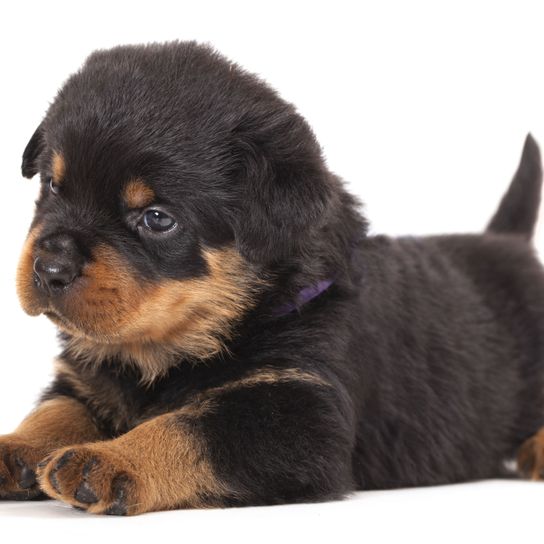
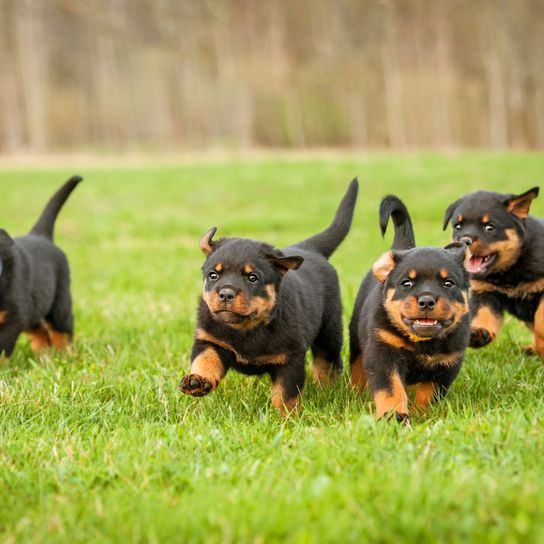
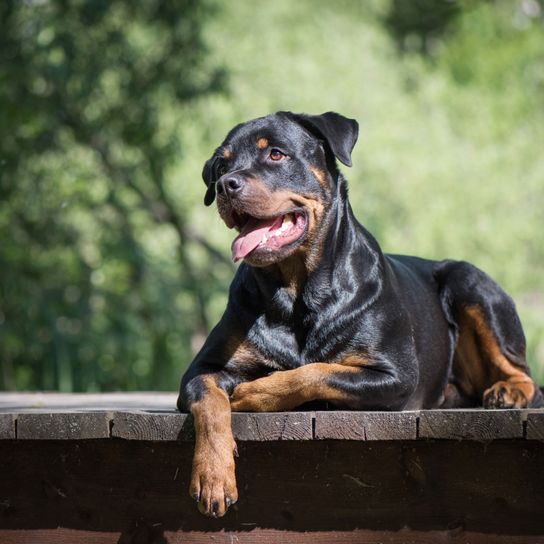
| Alternate Name | Rotti |
| Origin | Germany |
| Life expectancy | 8 - 10 years |
| Care requirements | low-maintenance |
| Activity level | average |
| FCI group | Molossian type |
| AKC group | Herding Group |
| KC group | Pastoral Group |
Rottweiler mixes
Attitude, character and temperament of the breed
Typical character traits of the Rottweiler
Outstanding character traits of this breed are loyalty, fearlessness, strength and reliability. The Rottweiler is a self-confident, extremely alert and attentive dog, with a pronounced willingness to defend itself and courage. This makes the dog an excellent object protection and utility dog, which is why nowadays it is mainly used in protective services or by the police.
The natural self-confidence of the dog can easily turn into dominance. Despite its classification as a list dog, the Rottweiler is a good-natured dog that is also fond of children.
The bottom line is that the Rottweiler is of a friendly and peaceful disposition, very affectionate, obedient, leader and eager to work. His appearance betrays primitiveness and his behavior is nerve-proof. He reacts with high attention but calmness towards his environment.
Special feature
Snoring is more common in Rottweilers than in other dog breeds!
Dangerousness of the Rottweiler
Reports of biting attacks by Rottweilers occur from time to time, but such incidents are usually due to improper training and insufficient socialization of the dogs. Some experts also recommend that the Rottweiler should wear a muzzle in public for safety reasons. If you want to do this, it's best to get your dog used to it early and make sure the muzzle fits comfortably.
Education of a Rottweiler
With this breed of dog, as with all others, consistent education from puppyhood is of great importance. Education also includes early socialization of Rottweiler puppies. Dealing with strange people and other dogs must be learned. If you want to get a Rottweiler puppy, the support of a dog school is recommended for the purpose of proper education of the dog.
Usage
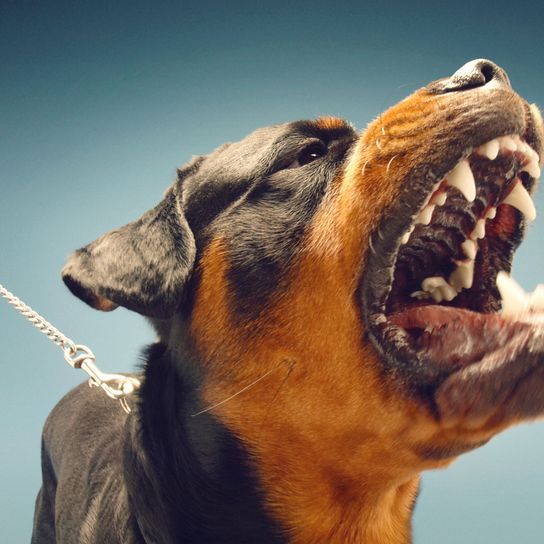
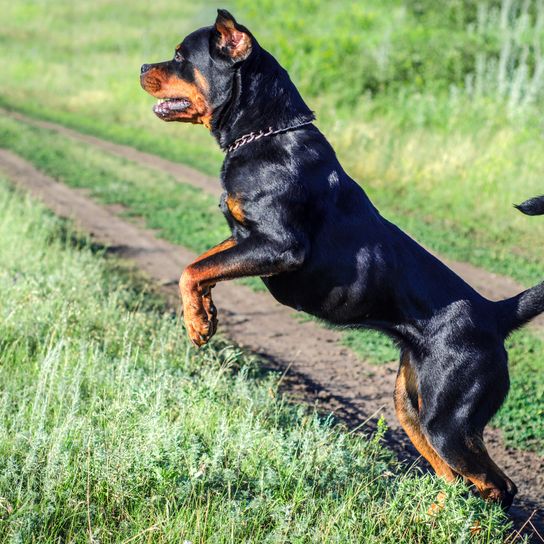
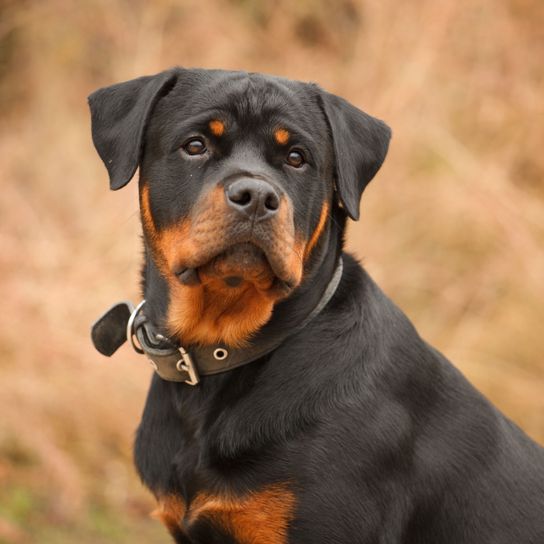
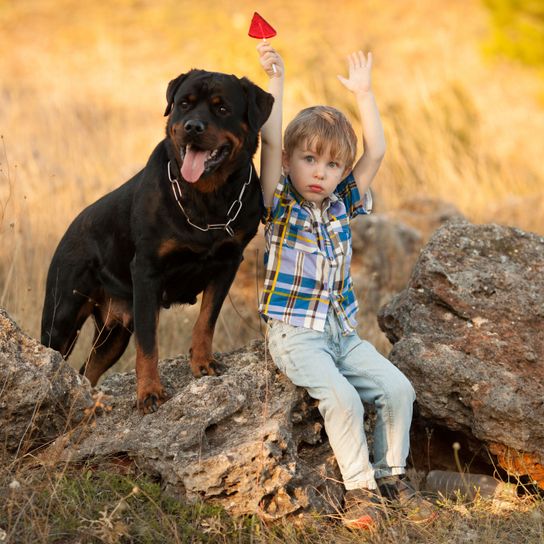
Care and health of the Rottweiler
Grooming the Rottweiler is simple, as occasional brushing is sufficient. In addition, there is the care of the teeth and a regular ear check. The latter is important to prevent the dog's drooping ears from becoming infected.
Diseases
Rottweilers are usually not very disease-prone dogs. The life expectancy of healthy dogs is about 9 - 10 years. But there are some breed-related clusters of health problems:
- Heart problems: many Rottweilers suffer from cardiac vein stenosis and heart failure. The dogs tire quickly, get short of breath and suffer from cardiac arrhythmias. The disease is hereditary.
- Degenerative spinal cord inflammation. This is an injury to the spine that causes fluid to accumulate in blood vessels and causes inflammation. Triggers of such inflammation are incorrect, improper movement.
- Hip joint (HD) and elbow dysplasia (ED): These are malformations of joint balls or sockets in the hip area or a maldevelopment of the forearms. The cause of HD is usually hereditary defects. ED is often caused by too much strain or overuse of the dog's elbows (e.g. by frequent stair climbing).
- Osteochondrosis: This disease results in disturbed cartilage detachment in the joint. The dog walks unsteadily and is lame. Causes are hereditary defects, circulatory disorders or too much stress.
Buying and breeding a Rottweiler
If you have decided to buy a Rottweiler, you need a reputable breeder. Here a puppy costs about 1000 Euro.
Alternatively, you can of course also look for a suitable quadruped in an animal shelter. If dog owners become ill or die or simply do not have enough time for the dog, they end up at best in the shelter.
For breeding Rottweilers, you usually need a permit from the responsible veterinary office according to section 11, paragraph 1, no. 3a of the Animal Protection Act (TierSchG). This is the case if you want to breed or sell dogs commercially.

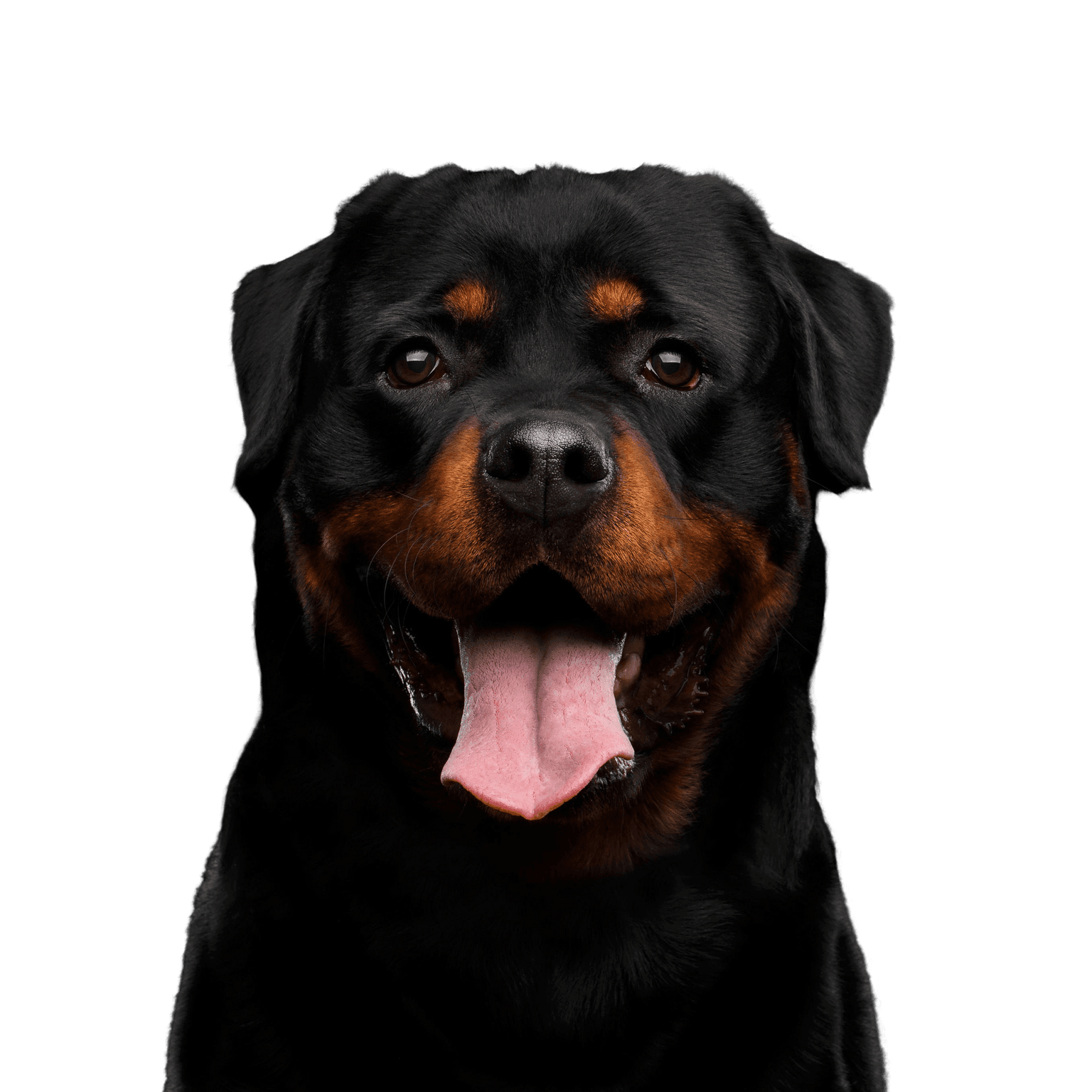
Breed characteristics of the Rottweiler
The Rottweiler is a German dog breed recognized by the FCI and belongs to FCI Group 2 (Pinscher and Schnauzer - Molossoid - Swiss Mountain and Cattle Dogs), Section 2.1 (Great Dane-type dogs), Standard No. 147, Working Test Dogs. His gait as a trotter is harmonious and uninhibited, with good stride.
The males of this breed have a height at withers of 61-68 cm and a weight of about 50 kg, while the females are somewhat smaller with a height at withers of 56-63 cm and a weight of about 42 kg.
The head
The medium length skull of the Rottweiler is relatively broad between the ears and moderately domed in the forehead line when viewed from the side. The occipital spine is well developed without being strongly prominent. While the zygomatic arch and frontal stop are relatively pronounced, the frontal furrow is only faintly perceptible.
The top of the head appears broadened with the ears laid forward and well attached.
The muzzle
The nasal tip of the Rottweiler is well developed and rather broad than round. The nose leather has relatively large openings and is always black in color. The muzzle itself should appear neither elongated nor shortened in relation to the top of the head, has a broad base and a moderate taper.
The tight fitting lips are also black and the corner of the lips is closed. The teeth should be as dark as possible. In the typical scissor bite of the Rottweiler, the upper incisors reach over those of the lower jaw like scissors.
The eyes & ears
The medium sized, almond shaped eyes of the Rottweiler are usually a deep brown color. The eyelids should be well fitted. The pendulous ears are also described as medium in size and set high and wide apart in a triangular shape.
The body
The strong neck is well muscled with a slightly arched nape. The Rottweiler has no dewlap or loose throat skin. The straight back is described as tight, the loins are short and deep. Continuing into the broad croup, there is a slight curve which is neither straight nor sloping.
The chest is capacious, broad and deep (about 50% of the height at the withers), with well developed forechest and well sprung ribs. The flanks do not appear tucked up on the lower profile line.
The tail
Also in the breed standard the tail is natural. Strongly built, it stands horizontally in extension of the topline and is slightly curved and upstanding when alert, highly excited or in motion. At rest it is also hanging. Attached to the barrel, the tail extends to about or only slightly longer than the heel.
The limbs
The forelegs, seen from the front, are straight and not close together. The slope of the shoulder blade to the horizontal is about 45 degrees and the upper arm lies well against the rump. The forearm is strongly developed and muscled, and the pastern is slightly springy and not steeply sprung.
Seen from behind, the hind legs are straight and not tightly set. In unconstrained stance, thigh to hip bone, thigh to lower thigh and lower thigh to metatarsus, form an obtuse angle. The moderately long thigh should be broad and strongly muscled, as should the long but sinewy lower thigh. The powerful hock must not be steep.
The front feet are round with tight, arched toes and hard pads. The claws should be black. The hind feet correspond to the same picture, but are slightly longer.
| Fur length | short |
| Fur | flat coated |
| Ear shape | Triangle |
| Tail | lang |
| Anatomy | rugged, massive, square, hefty |
| Size ♀ | 56 - 63 cm |
| Weight ♀ | 35 - 48 kg |
| Size ♂ | 61 - 68 cm |
| Weight ♂ | 50 - 60 kg |
| Suitable For | - |
Colors



Known Diseases
Hip dysplasia (HD)
Hip dysplasia (HD) is a genetic condition in dogs where the hip joint is not shaped properly. This leads to pain, stiffness and restricted movement.
Elbow dysplasia (ED)
Elbow joint dysplasia is a chronic disease complex of the elbow joint of fast growing dog breeds.
Heart disease
Can occur frequently in dogs and can sometimes be treated with medication.
Joint damage
In some breeds, joint damage can occur later in life, affecting the musculoskeletal system.
FAQ
-
Yes, the Rottweiler makes a great family dog with good training.
-
Not by nature. However, the Rottweiler has a very strong bite and is considered a list dog in some areas.
-
The Rotti is very intelligent and can assess situations very well itself, needs and demands training.
-
Yes, the Rottweiler is a listed dog in some states in Austria, Germany and Switzerland and is popularly known as a fighting dog.
-
Yes, the Rottweiler is classified by the FCI as a companion, service and working dog and, according to the breed standard, requires a working test.
-
Depending on the definition, keeping a dog is always expensive. A Rottweiler is not a cheap family member not only because of its acquisition costs (about 1000 euros), but also because of the running costs.
-
On average, Rottweilers snore more often than other dog breeds.
-
No, the Rottweiler is basically not necessarily a beginner dog.







